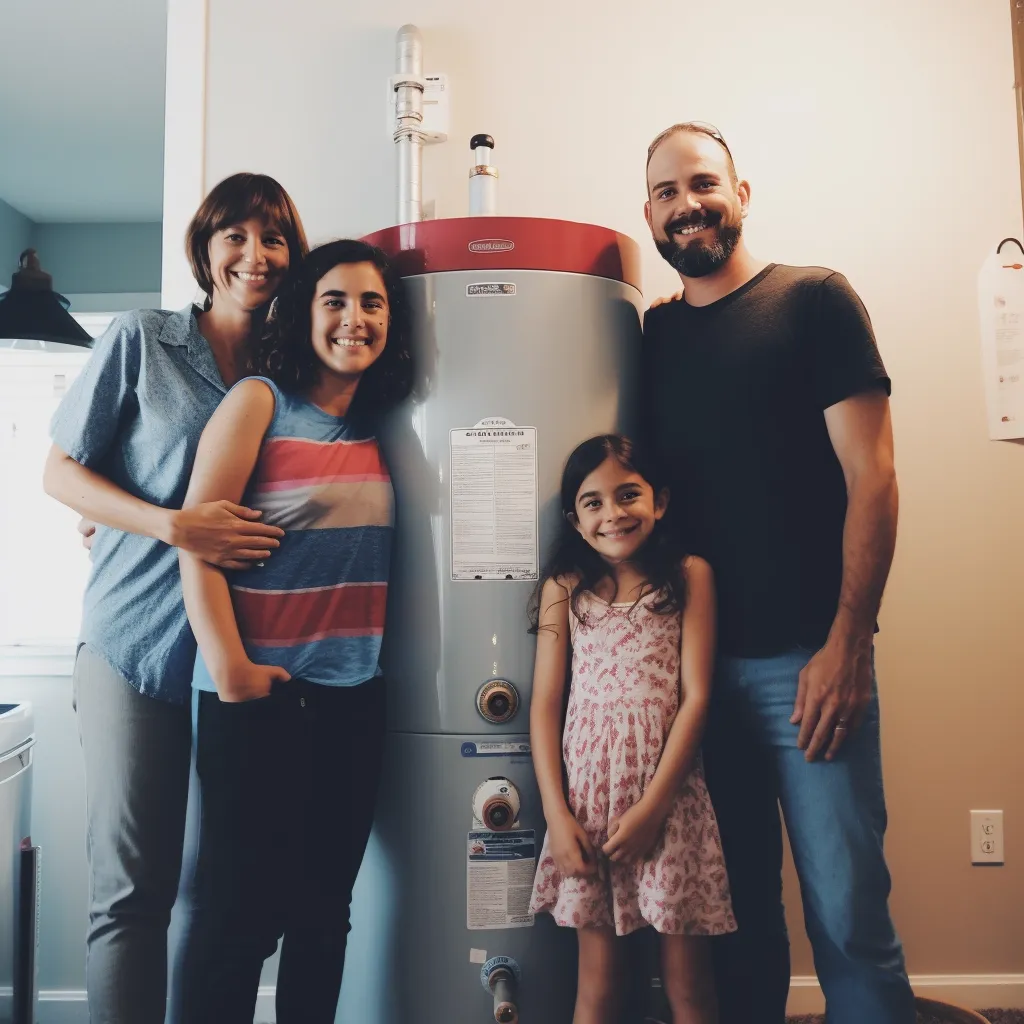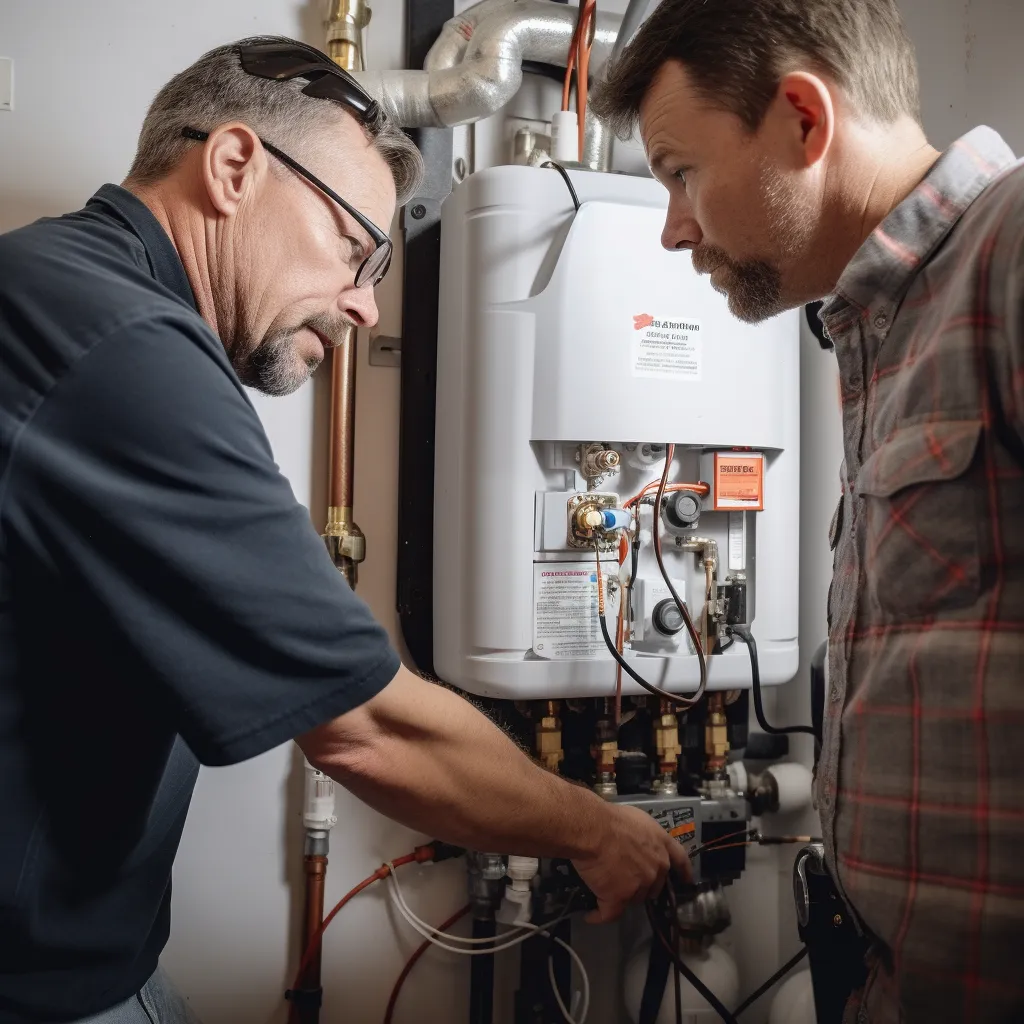Preventing Sediment Buildup in Water Heaters for Energy Efficiency

Water heaters are essential appliances in our homes, providing us with hot water for showers, laundry, and dishwashing. However, over time, sediment buildup can compromise their efficiency and even lead to costly repairs or replacements. In this comprehensive guide, we will delve into the causes and effects of sediment buildup in water heaters and provide authoritative solutions to avoid this common issue. By taking proactive steps to prevent sediment buildup, you can ensure your water heater operates at peak energy efficiency, saving you both money and frustration.
Understanding Sediment Buildup
Sediment buildup occurs when minerals and debris in your water supply settle at the bottom of your water heater's tank. These sediments primarily consist of calcium carbonate, magnesium, and other minerals present in hard water. Over time, this sediment accumulates and forms a layer of insulating material at the bottom of the tank. This layer acts as a barrier between the heating element and the water, leading to several detrimental effects.
Causes of Sediment Buildup
Hard Water Supply: The primary culprit behind sediment buildup is hard water. If your home receives water with a high mineral content, sediment accumulation is more likely to occur. The minerals in hard water precipitate out of the water when it's heated, settling at the tank's bottom.
High Water Temperature: Running your water heater at excessively high temperatures can exacerbate sediment buildup. The higher the water temperature, the faster minerals in the water will precipitate and accumulate in the tank.
Lack of Regular Maintenance: Neglecting regular maintenance, such as flushing the tank, allows sediment to build up unchecked. Routine maintenance is key to preventing sediment-related problems.
Effects of Sediment Buildup
Reduced Efficiency: As sediment accumulates at the bottom of the tank, it acts as an insulator. This insulating layer forces your water heater to work harder to heat the water, leading to increased energy consumption and higher utility bills.
Shortened Lifespan: Sediment buildup can lead to the premature aging of your water heater. The increased workload can cause parts to wear out more quickly, potentially shortening the appliance's lifespan.
Inconsistent Heating: Sediment can create hot spots within the tank, resulting in uneven heating. This can lead to temperature fluctuations when you use hot water, making showers uncomfortable and potentially scalding.
Increased Maintenance Costs: Over time, sediment buildup can cause issues such as corrosion and the development of sediment pockets that can damage the tank and other components. This leads to costly repairs or the need for a replacement water heater.
How to Prevent Sediment Buildup
To maintain an energy-efficient water heater and extend its lifespan, it's crucial to take proactive measures to prevent sediment buildup. Here are some authoritative solutions to avoid this common problem:
Install a Water Softener: If you live in an area with hard water, consider installing a water softener. Water softeners remove the minerals responsible for sediment buildup, reducing the likelihood of accumulation in your water heater.
Lower the Water Temperature: Set your water heater to a moderate temperature (around 120°F or 49°C). Lowering the temperature reduces the rate at which minerals precipitate, slowing down sediment buildup.
Perform Regular Flushing: Flushing your water heater's tank is one of the most effective ways to prevent sediment buildup. Follow these steps to flush your water heater: a. Turn off the power supply (electricity or gas) to the water heater. b. Shut off the cold water supply to the tank. c. Attach a garden hose to the drain valve at the base of the tank. d. Place the other end of the hose in a suitable drainage area or floor drain. e. Open the pressure relief valve on the top of the tank to allow air into the tank and facilitate draining. f. Open the drain valve and let the water flow out of the tank. Be cautious, as the water will be hot. g. Once the tank is empty, close the drain valve and turn on the cold water supply. h. Allow the tank to fill partially, and then repeat the draining process until the water runs clear. This may take several cycles. i. Finally, close the pressure relief valve, turn on the power supply, and your water heater is ready for use.
Install a Sediment Filter: Consider installing a sediment filter in the water supply line leading to your water heater. These filters can trap and prevent many minerals and debris from entering the tank. Perform Annual Inspections: Regularly inspect your water heater for signs of sediment buildup, corrosion, or other issues. Address any problems promptly to prevent them from escalating.


Effects of Sediment Buildup on Energy Efficiency
Reduced energy efficiency is one of the most significant consequences of sediment buildup in water heaters. When sediment accumulates at the bottom of the tank, it creates a thermal barrier that hampers the heating process. As a result, your water heater needs to work harder and consume more energy to maintain the desired water temperature.
The insulating layer of sediment essentially forces your water heater to overcompensate, leading to increased energy consumption. This extra energy usage not only drives up your utility bills but also has a more substantial environmental impact. By addressing sediment buildup, you can contribute to a more energy-efficient and eco-friendly home.
Longevity of Water Heaters
Another vital aspect to consider is the lifespan of your water heater. Water heaters are a significant investment, and extending their lifespan can save you substantial money over the years. Sediment buildup accelerates wear and tear on the appliance. The accumulation of mineral deposits not only makes the heating process less efficient but also promotes corrosion within the tank. Corrosion is a formidable enemy for water heaters, as it can lead to leaks and irreparable damage.
When sediment buildup is left unchecked, the tank's structural integrity can be compromised, and you may find yourself facing the unexpected cost of replacing your water heater prematurely. To protect your investment and reduce the environmental impact of manufacturing and disposing of appliances, preventing sediment buildup is paramount.
Enhanced Comfort and Safety
Apart from the direct energy-related issues, sediment buildup can affect the comfort and safety of your home. Hot water that passes through sediment pockets can become overheated, leading to inconsistent water temperatures. This inconsistency can make your showers uncomfortable and, in extreme cases, result in scalding.
Additionally, sediment buildup can affect the pressure relief valve's functionality. If the valve fails to operate correctly, it can pose a safety hazard, as it won't release excess pressure, potentially leading to a catastrophic tank failure. Maintaining your water heater by addressing sediment buildup ensures consistent hot water temperatures and a safer home environment.
Comprehensive Solutions for Energy-Efficient Water Heaters
To further enhance the energy efficiency of your water heater and prolong its life, consider the following tips:
Anode Rod Inspection: The anode rod in your water heater is a sacrificial component that helps prevent corrosion. Regularly inspect and replace the anode rod as needed, as it can deteriorate over time, especially in hard water conditions. Temperature and
Pressure Relief Valve (T&P Valve): Ensure the T&P valve is in good working condition. This valve is designed to release excess pressure and prevent tank explosions. Regularly test the valve by lifting the lever and allowing it to snap back into place.
Insulate the Tank: Consider adding an insulating blanket to your water heater. This can reduce heat loss and further improve energy efficiency.
Schedule Professional Maintenance: While you can perform some maintenance tasks yourself, it's advisable to schedule annual professional maintenance for your water heater. A qualified technician can thoroughly inspect your unit, address sediment buildup, and make any necessary adjustments or repairs.
Sediment Buildup Has Significant Consequences
Sediment buildup in water heaters is a common problem that can have significant consequences, including reduced energy efficiency and increased maintenance costs. By understanding the causes and effects of sediment buildup and implementing the authoritative solutions outlined in this guide, you can ensure your water heater remains energy-efficient and reliable for years to come.
Regular flushing and maintenance are key to keeping sediment at bay and enjoying the benefits of an efficient water heating system. Invest the time and effort now to save on energy bills and avoid costly repairs down the road, all while contributing to a more sustainable and energy-efficient Plano household.

Contact Us
GET IN FULL TOUCH
PHONE (469) 838-5525
EMAIL:
jason@waterheatersinplanocom
Evolution Plumbing
Plano, TX 75023
Texas Plumbers License: M-44821
